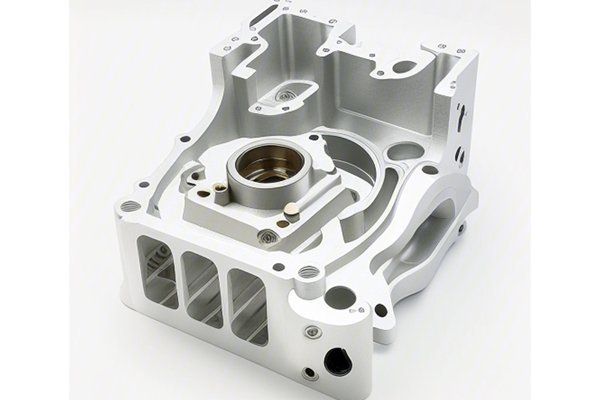Have you ever wondered why certain materials are favored over others in the demanding realm of CNC machining? The choice can make or break the precision and durability of any finished piece. For instance, aluminum is a popular choice for a wide array of applications, but not all aluminum alloys are created equal. In this blog, we’ll delve into the critical differences between two of the most widely used aluminum alloys: 7075 and 6082, particularly focusing on their machining accuracy during CNC turning.
: The Importance of Material Selection in CNC Machining
According to the Aluminum Association, aluminum is the second most used metal in the world after steel, and CNC machining is at the forefront of evolving priorities in manufacturing. From aerospace components and automotive parts to medical devices and consumer electronics, precision is paramount, and the material plays a key role in achieving it.
When it comes to utilizing aluminum, 7075 and 6082 alloys are highly regarded for their strength and workability. However, understanding the nuances in their properties, specifically regarding machining accuracy, is essential for anyone involved in production and design.
In this extensive blog, we will examine the intricate details involved in CNC turning of these two alloys and provide insights into maximizing machining accuracy. We aim to bring clarity around their differences in terms of machining characteristics, applications, tools, and best practices.
Section 1: Overview of 7075 and 6082 Aluminum Alloys
1.1 Understanding Aluminum Alloys
Aluminum alloys are categorized into two types: wrought and cast. Both alloys we are discussing fall into the wrought category, which means they are processed by deformation under heat and/or pressure.
1.2 Key Properties
| Property | 7075 Aluminum | 6082 Aluminum |
|————————|————————————-|————————————-|
| Tensile Strength | 570 MPa | 260 MPa |
| Yield Strength | 505 MPa | 210 MPa |
| Machinability | Fair to Good | Good |
| Corrosion Resistance | Moderate | Good |
| Ideal Applications | Aerospace, automotive, military | Structural components, bridges |
Section 2: The CNC Turning Process
CNC turning is a subtractive manufacturing process where material is removed by a rotating workpiece. It involves various stages, including setup, machining, quality control, and finishing.
2.1 CNC Turning Setup
The setup is a crucial stage that directly affects the machining accuracy. It involves the following steps:
Section 3: Machining Accuracy Factors in CNC Turning
3.1 Material Characteristics
Both 7075 and 6082 alloys exhibit different behaviors during machining due to their distinct compositions:
3.2 Tooling and Techniques
The choice of tooling affects both surface finish and dimensional accuracy:

3.3 Cooling and Lubrication
Effective cooling is vital during CNC turning:
Section 4: Achieving High Machining Accuracy
To maximize the machining accuracy of both alloys, a proactive approach is essential. Here are key strategies:
4.1 Continuous Monitoring
Implementing real-time monitoring systems can drastically improve outcomes:
4.2 Quality Control Measures
Frequent measurements of critical dimensions throughout production can help maintain accuracy. Techniques such as:
4.3 Feedback Loop
Creating a feedback mechanism allows machinists to adjust their tactics based on past performance, leading to continuous improvement.
Section 5: Case Studies
5.1 7075 in Aerospace
In high-stakes scenarios like aerospace engineering, the demand for accuracy is paramount. A leading aerospace company reported that by improving their CNC turning process for 7075 components, they reduced scrap by 20% through better tooling and monitoring.
5.2 6082 in Construction
An automotive company utilizing 6082 for structural components successfully improved turnaround times by 15% after implementing streamlined CNC machining methods, emphasizing cooling techniques.
Section 6: Future Trends in CNC Machining for Aluminum Alloys
6.1 Advancements in Tool Technology
Innovations in tooling, such as additive manufacturing of tool components, promise to revolutionize machining accuracy for both alloys.
6.2 Smart Manufacturing
The rise of Industry 4.0 technologies will continue to drive efficiency. Predictive analytics and real-time feedback will pave the way for even sharper machining tactics.
6.3 Sustainable Practices
As environmental concerns rise, an emphasis on reducing waste and optimizing machining will guide future practices in the industry.
: The Precision Paradigm in CNC Turning
As we’ve explored, the differences in machining accuracy between 7075 and 6082 aluminum alloys during CNC turning are driven by a combination of material properties, tooling choices, and effective management strategies.
Understanding these nuances is essential for anyone involved in manufacturing, engineering, or design. The implications of choosing the right alloy extend far beyond mere costs, impacting product performance, life cycle, and efficiency.
In a landscape where precision and efficiency reign supreme, staying informed and adapting to advancements will not only improve outcomes but also ensure the competitiveness of manufacturers. As professionals in the field, embracing these insights is vital for thriving amid ever-evolving technologies.
The considerations and techniques discussed in this blog serve as a roadmap not only for achieving high machining accuracy but also for strategizing costs, timelines, and product excellence. We hope this exploration has enlightened your approach to CNC machining and highlighted why the choice of aluminum alloys is a fundamental aspect worth careful consideration. Remember, in the world of CNC machining, precision is everything.






